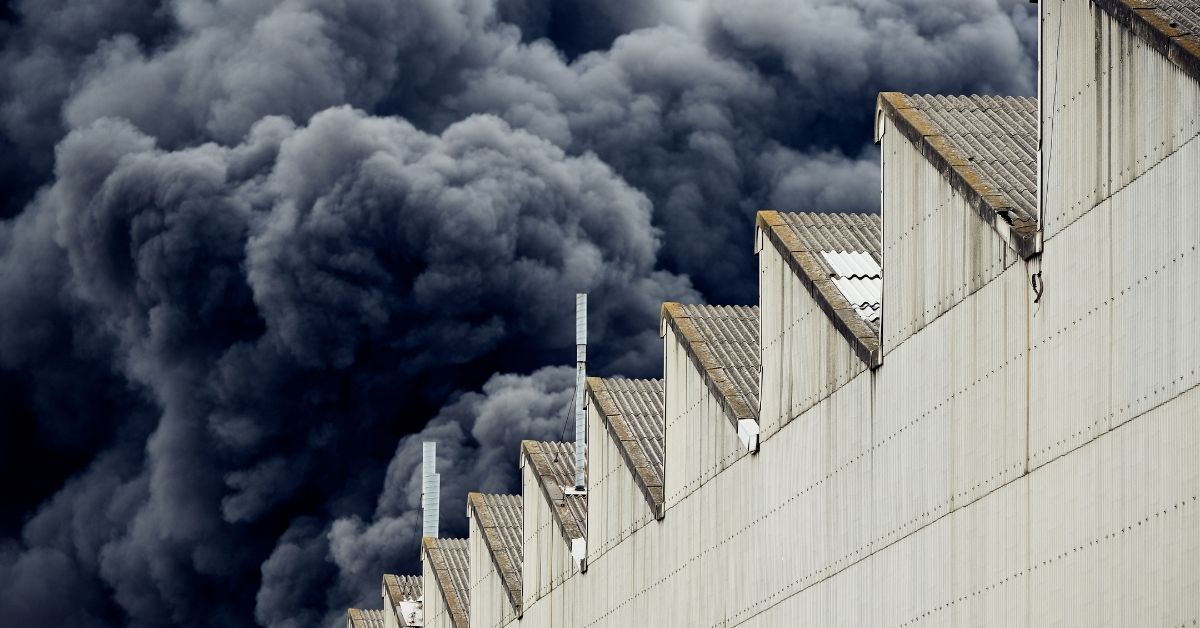October is Breast Cancer Awareness Month, a time to honor survivors, remember those we’ve lost, and raise awareness about ways to protect our health. Each year, this month reminds us of the many factors that can influence breast cancer risk—from genetics, lifestyle, and hormonal influences to the environments in which we live and work.
While the connection between air pollution and breast cancer has been explored in past articles (2022, 2023, and early 2024), recent studies have brought new clarity to the role of the air we breathe. Researchers worldwide are increasingly finding that exposure to fine particulate matter, volatile chemicals, and other airborne pollutants may not only increase the likelihood of developing breast cancer but also influence disease progression and survival outcomes.
This year, as we reflect on Breast Cancer Awareness Month, it’s a perfect opportunity to highlight these findings, understand who may be most at risk, and share actionable steps we can take to reduce exposure and support our body’s defenses. From improving indoor air quality to staying informed about local pollution levels, there are meaningful strategies that can help protect you and your loved ones.
How Air Pollution Can Affect Breast Health
Air pollution contains a mix of harmful chemicals, including fine particulate matter (PM2.5), polycyclic aromatic hydrocarbons (PAHs), volatile organic compounds (VOCs), and heavy metals. These pollutants can enter the body through inhalation, accumulate in tissues, and contribute to inflammation, oxidative stress, and DNA damage—all processes linked to cancer development.
Recent systematic reviews of longitudinal studies worldwide confirm this connection. One study published in December 2024 in International Journal of Environmental Research and Public Health analyzed decades of data from multiple countries and found that long-term exposure to ambient air pollution, particularly fine particulate matter, was consistently associated with an increased risk of developing breast cancer. Women living in areas with higher pollution levels had measurable elevations in risk compared to those in cleaner environments.1

Emerging Evidence: Pollution and Breast Cancer Outcomes
Beyond increasing the risk of developing breast cancer, new research suggests that air pollution may also influence how the disease progresses and how well patients respond to treatment. One area of focus is epigenetics—a branch of science that studies changes in gene expression that do not involve alterations to the underlying DNA sequence.
In simpler terms, while your DNA provides the instructions for your body’s functions, epigenetic changes can turn certain genes “on” or “off” in response to environmental factors like diet, stress, or pollution. Chronic exposure to air pollutants, such as fine particulate matter (PM2.5) and volatile chemicals, may trigger epigenetic changes that affect tumor growth, hormone signaling, and the body’s ability to repair DNA damage.
Preliminary findings indicate that women living in areas with higher pollution levels may develop tumors that are more aggressive or experience poorer outcomes compared to those in cleaner environments.2 This research highlights that the impact of air pollution may extend beyond the initial risk of developing breast cancer—it may also influence disease progression and survival.
Understanding epigenetics underscores how environmental exposures, like the air we breathe every day, can have profound and long-term effects on health, making the case for proactive measures to reduce pollution exposure both indoors and outdoors.
Who Is Most at Risk?
Breast cancer can affect anyone—including men—but certain populations may be particularly vulnerable:
-
Women in urban or industrial areas, where PM2.5 and VOC concentrations are higher.
-
Postmenopausal women, as some studies suggest age-related vulnerability to pollutant-driven hormonal disruptions.
-
Those with preexisting respiratory or immune challenges, since chronic inflammation can amplify cancer-related pathways.
These insights underscore the importance of reducing exposure wherever possible.
Steps to Protect Yourself and Your Loved Ones
While air pollution is a global challenge, there are practical ways to reduce exposure in daily life:
-
Improve Indoor Air Quality
-
Use high-quality air purifiers with Certified HEPA Material and activated carbon filters, like the Austin Air HealthMate.
-
Ventilate when outdoor air quality is good; otherwise, keep windows closed during peak pollution.
-
Avoid smoking indoors or using aerosol-heavy cleaning products.
-
Stay Informed About Outdoor Air Quality
-
Check local air quality indexes and limit outdoor activity when PM2.5 levels are high.
-
Support Your Body’s Defenses
-
Maintain a diet rich in antioxidants, fruits, vegetables, and omega-3s to combat oxidative stress.
-
Prioritize sleep, stress reduction, and physical activity—all factors that support immune health and overall resilience.
-
Regular Screenings and Health Care
-
Stay up-to-date on recommended breast cancer screenings and checkups. Early detection remains one of the most effective strategies.

Reducing Your Indoor Air Risk: How Clean Air Can Help
While we can’t control outdoor pollution completely, the air inside your home is one area where you can make a difference. Research shows that long-term exposure to pollutants like PM2.5, VOCs, and chemical byproducts can contribute to breast cancer risk. By improving indoor air quality, you’re giving your body a fighting chance against these invisible stressors.
Austin Air Purifiers are designed to remove allergens, chemicals, and fine particles from the air you breathe every day. Equipped with medical-grade Certified HEPA Material and activated carbon filters, they can capture both particulate matter and chemical pollutants that often linger indoors—including those released during cooking, cleaning, or from outdoor infiltration. For families, seniors, and anyone particularly vulnerable, this can be an important layer of protection.
Investing in cleaner air is more than a comfort measure; it’s a proactive step toward reducing exposure to harmful pollutants that may influence breast cancer risk and overall health. Even small changes in your home environment—combined with healthy lifestyle habits—can help you breathe easier and support long-term well-being.
Final Thoughts
This Breast Cancer Awareness Month, let’s remember that the air we breathe is part of the picture—and protecting it is part of protecting ourselves. By staying informed, taking proactive steps, and supporting one another, we can reduce risk, strengthen resilience, and embrace every season with greater confidence and peace of mind.
REFERENCES
1 Tippila J, Wah NLS, Akbar, KA, et al. (2024 December 23). Ambient Air Pollution Exposure and Breast Cancer Risk Worldwide: A Systematic Review of Longitudinal Studies. International Journal of Environmental Research and Public Health, 21(12), 1713. doi: 10.3390/ijerph21121713.
2 Peng D, Liu X, Sheng Y, et al. (2025 June 5). Ambient air pollution and the risk of cancer: Evidence from global cohort studies and epigenetic-related causal inference. Journal of Hazardous Materials. 489,137619. doi: 10.1016/j.jhazmat.2025.137619.



